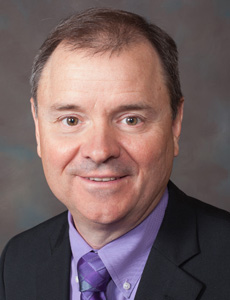Medical Care and Return to Work in the Age of COVID: Experts Weigh In on What Comes Next

On September 24, the Workers Compensation Research Institute (WCRI) president and CEO John Ruser led a webinar on the delivery of medical care and return to work in the COVID-19 era.
Ruser was joined by WCRI senior research fellow Dr. Randy Lea, who is an orthopedic surgeon and hospital chief medical officer in Columbus, OH, and infectious disease expert Dr. Mark Herbert.
Among the topics discussed were changes in the delivery of care and hospital services as a result of COVID-19, impacts on workers’ compensation patients’ access to medical care, what tests are available, and return-to-work strategies and protocols for recovered COVID-19 patients.
Here’s what they had to say.
Responding to a Pandemic
According to Lea, there have been three phases of pandemic response in health care delivery and hospital services.
The initial, acute phase was marked by considerable uncertainty. “It wasn’t clear whether we were going to have a true pandemic here,” said Lea, citing, “a number of knowledge gaps about the virus, its treatment and prevention.”
Amid concern that America’s health care system could be overwhelmed, health providers moved aggressively.
“We didn’t know whether we were going to be overwhelmed, like what we saw in other countries,” said Lea. “So what most hospitals did was begin to prepare for a worst-case scenario.”

Dr. Randy Lea, senior research fellow, WCRI; orthopedic surgeon
This involved treating COVID and not much of anything else, “except the absolute half to-dos, like heart attacks, things of that nature,” segregating COVID patients, delaying procedures like joint replacements, hernia repairs and plastic surgery, and minimizing face-to-face visits in favor of telemedicine.
“We had to keep beds available for the sickest patients, and we even had some shortages with reagents, because some of the testing materials were lacking and supply chain necessities,” said Lea.
In addition to the potential for an overwhelming volume of patients, there were concerns about health care workers contracting the disease and attrition due to burnout, although that has proven to be minimal.
Here for the Long Haul
The second phase involved the transition to recognizing COVID as a longer-term issue.
Testing and scheduling protocols were put in place that allowed the system to safely catch up with a backlog of elective cases. Expanded office hours and telemedicine were used to help patients with chronic diseases such as high blood pressure, heart troubles, diabetes, who had been putting off treatment due to the pandemic.
We are now in what Lea calls the, “Living with COVID Phase,” acknowledging that the disease is here to stay and must be treated alongside all the normal health care concerns.
“We’re still cohorting, still using personal protective equipment, and our PPE and supplies are better,” said Lea. New routines enable facilities “to flex our beds, to expand and contract as the number of cases come in.”
What About Workers’ Comp?
The impact on care for workers’ comp patients has been harder to pin down.

Dr. Mark Herbert, infectious disease expert
“It’s been different in different places, and providers have been experiencing different things,” said Lea, who has seen minor disruptions and a decrease in WC cases, possibly due to fewer workers working and fewer injuries occurring, as well as a deferral of treatment for more minor injuries.
“There’s been a decrease in pre-placement/post-offer testing, because hiring has gone down,” Lea added.
Availability of services has also been a factor. “The larger imaging centers and physical therapy centers, both of which are utilized highly in worker’s comp, a lot of those were closed,” said Lea.
Lea voiced concerns that such disruptions of occupational and other therapies can cause patients to lose ground, requiring addition treatment.
According to Herbert, ambulatory or out-patient sites have also changed procedures. “The triaging of patients has evolved a lot over the last six months,” he said.
As with hospitals, entrances and exits were minimized to ensure a uni-directional flow of people. Vendor visits were suspended; visitors accompanying patients were limited; and patients were questioned about symptoms, temperature-checked and required to wear masks.
Testing Is Becoming Faster, Helping Deliver Care
With faster and more widely available testing, results can be obtained before patients enter facilities. Elective procedures have resumed and now approach normal levels.
Herbert’s organization uses molecular tests, which involve a long swab inserted through the nasal passage into the posterior pharynx. This procedure is considered more invasive and takes longer to process, but it is more accurate than the quicker and less invasive antigen tests.
“When the outbreak initially started, we had to send all of our tests to our reference laboratory, which [took] four to ten days to get a test result,” said Herbert. “Once all the reagents became more widely available for the rapid test, we were able to do these tests very quickly in house, in the course of hours, certainly in less than a day.”
Another shortage of reagents during the summer did cause a brief return to sending out samples and the accompanying delays.
Positive Results with Other Treatments
“The prognosis of severely ill patients has improved somewhat,” Herbert said, citing improvements in how oxygen and ventilators are utilized, as well as several treatments that have come to the fore.
Here are a handful of such treatments:
- Corticosteroids decrease the severity and duration of symptoms.
- Remdesivir, an IV antiviral drug, has been used to interrupt the virus’s reproduction and is most helpful for patients with moderate symptoms.
- Convalescent plasma is drawn from individuals who have recovered from COVID infection and may contain antibodies, although information on its efficacy is still mostly anecdotal.
- Tocilizumab, an immune system-suppressing drug used to treat conditions like rheumatoid arthritis, is thought to help prevent the immune system over-reaction that causes much of the worst effects of COVID.
Prepping for Flu Season
Currently, facilities are preparing to transition to new procedures as flu season arrives, including testing patients with COVID-like symptoms before their visit, perhaps outdoors in the parking lot.

John Ruser, president and CEO, WCRI
“The symptoms of respiratory infections like influenza and COVID are very similar,” said Herbert. “They cause fever, they cause cough, they cause muscle aches and headaches.”
The differences are subtle and inconsistent. COVID patients are more likely to have shortness of breath and can involve gastrointestinal symptoms, whereas flu is more likely to include achiness and a cough.
Herbert advises monitoring temperature and other symptoms. “If they’re getting worse in 24- to 48-hours instead of getting better, they should contact their health care provider.”
Returning to Work After Illness
Employers should also have protocols in place for employees returning to work after COVID, considering both infectiousness and functional concerns.
According to the CDC, patients infected for more than 10 days whose symptoms are improving are probably not shedding live virus anymore, so Herbert advises against returning to work until those 10 days have passed since onset, or their first positive test, and symptoms have been improving for three days, with no fever and no fever medication like acetaminophen, aspirin, etc.
Some workplaces, such as health care, may require a negative test, as well.
Herbert also recommends functional assessments and appropriate operational accommodations for those weakened or otherwise impaired during potentially long recoveries.
The WCRI webinar concluded with a brief overview of broader public health concerns, including the disproportionate impact of COVID on African American and Hispanic communities, the long-term impact on jobs due to quarantines, and how the unfortunately widespread disregard of public health recommendations has hindered efforts to slow the spread of the disease. &











